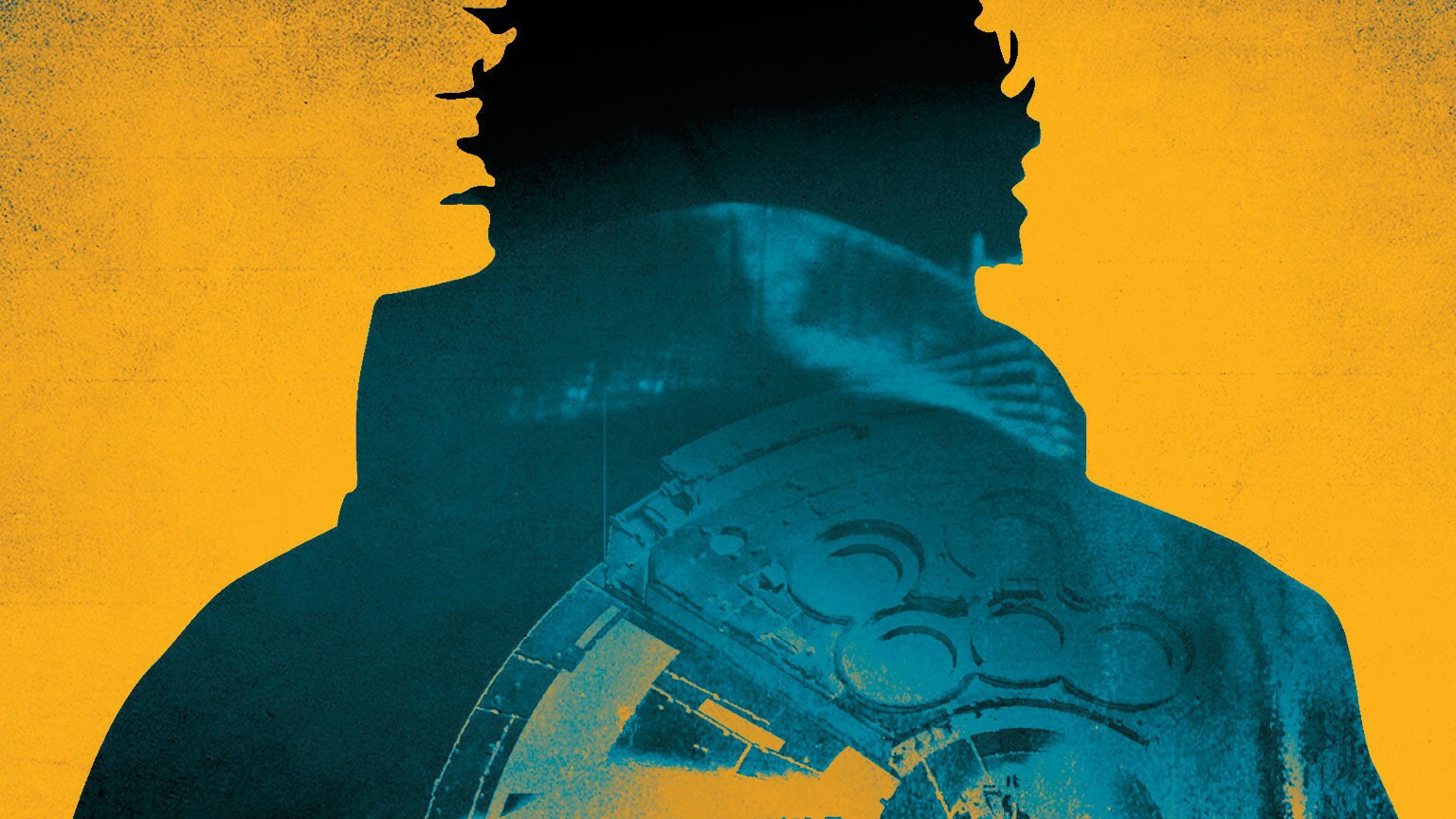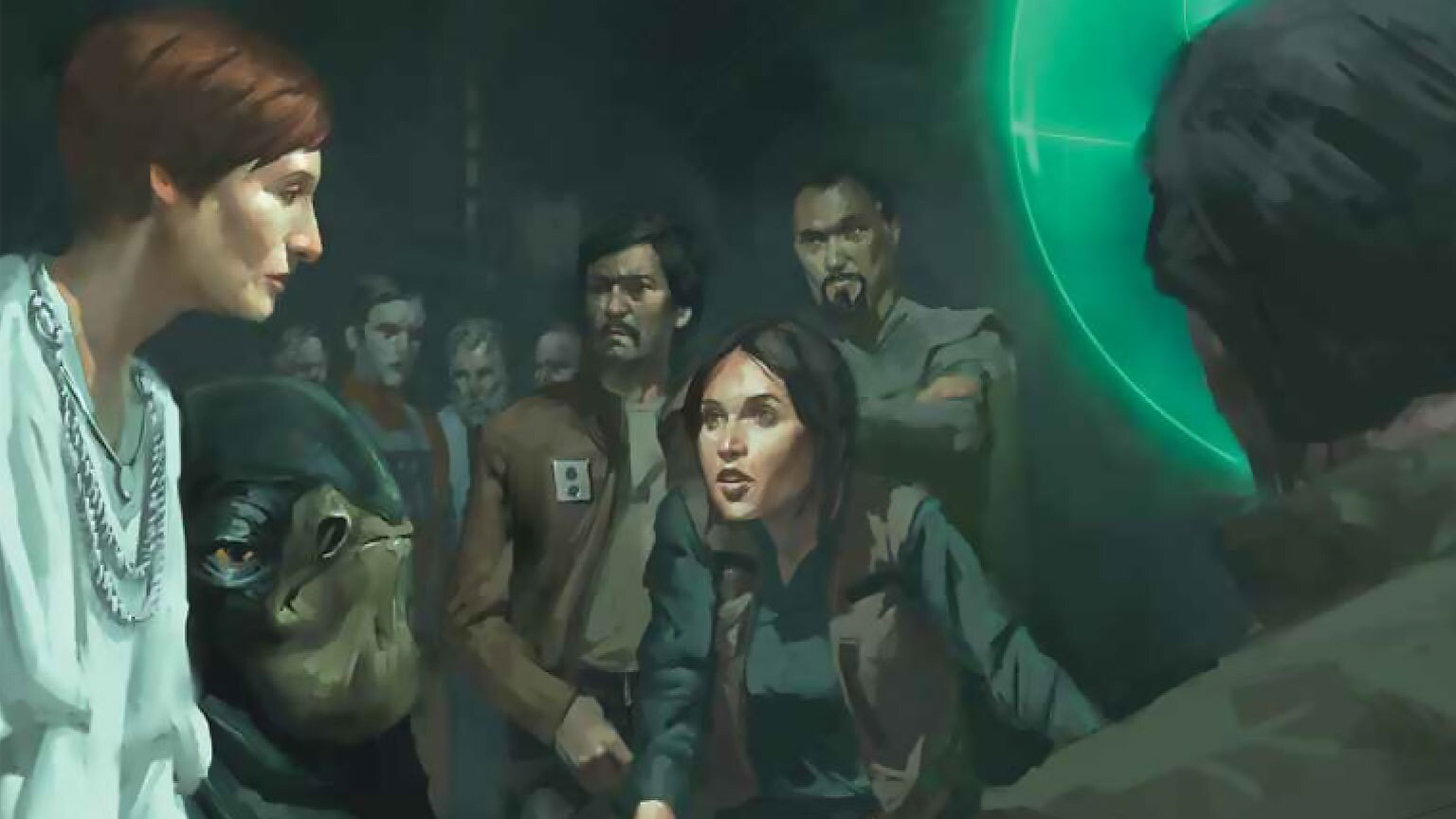Growing up on Tatooine, Luke Skywalker often looked out at the stars and wished for a life of adventure out there. If he had gotten a copy of the new book, Star Wars: Galactic Maps - An Illustrated Atlas of the Star Wars Universe, he might have gotten an even bigger appetite for the different worlds and star systems of the galaxy far, far away -- and maybe wouldn’t have been so dazed when he saw the patrons inside the Mos Eisley cantina. Available now, Galactic Maps is not your typical modern atlas, full of maps with plenty of boundaries and dots and exact locations; it’s more similar to map collections of the past, when the world was not as well-traveled, and empty and unknown spaces were filled in with hand-drawn illustrations depicting the historical events, landforms, flora, and fauna of a place.
Originally developed and released by Egmont UK as Star Wars: Galactic Atlas in the United Kingdom, Ireland, and South Africa in November, this lovingly detailed 80-page book brings together the characters, landmarks, creatures, and geography and presents it in an in-universe fashion, as if put together by an artist inspired by travelers’ tales. Plus, this atlas brings together information from across the Star Wars saga, including The Force Awakens, The Clone Wars, Star Wars Rebels, and the newest Star Wars film, Rogue One. StarWars.com reached out by e-mail to the real-world illustrator of Galactic Maps, Tim McDonagh, and learned how this treasury came to be.
StarWars.com: Galactic Maps is not your typical Star Wars reference book. What makes this book stand out?
Tim McDonagh: I think what makes the book stand out is seeing different scenes from the films, comics, books, and TV series all together on the pages. I think it gives the events of the Star Wars universe more of a sense of place, since there is so much there and it’s easy to get overwhelmed!
StarWars.com: The maps you’ve illustrated combine the places of Star Wars with a lot of the characters and happenings at those places -- how did this come about?
Tim McDonagh: Well, a lot of those choices were down to the editor, Emil Fortune. His extensive knowledge and research of the Star Wars universe was crucial in putting the book together. We knew we wanted it to be a book of maps that depicted different planets, so then after that it was more of a process of going through all of the material and working out what planets might be the most interesting to illustrate and what events in the universe held the most weight.
StarWars.com: What is the process you went through when developing a spread?
Tim McDonagh: I would start with the planet name and a list of 15 or so events that occurred there and then start penciling out all of the vignettes for the planets individually. For example, in the case of Naboo, vignettes like Queen Padmé Amidala, Doctor Nuvo Vindi, Boss Nass, etc., would all be drawn out separately about three or four times the size that they appear on the page. Then we would collate them on a spread and move them around until it made sense to us. After the layout of everything had been agreed, then I would ink all of those up, scan them in, and color them digitally. Then it was a matter of filling in the terrain and adding in any extra bits that I thought might help each spread along. So for Naboo, that was drawing a lot of trees and green areas, taking a look at the kind of architecture that was associated with Naboo and anything else that. There was lots of tweaking and moving objects around because of the scale of the project and all of the information in the book. I had been a huge Star Wars fan before taking this job on, though. I loved the films, books, and computer games growing up, and so I already had an advantage from that point of view.
StarWars.com: How did the collaborative process work between you and writer Emil Fortune?
Tim McDonagh: Emil was absolutely fantastic to work with, along with Egmont’s in-house designer Richie Hull, whom I couldn’t have managed any of it without! Emil was great at determining which events happened on what planets and at what time, which is a pretty difficult task, even for the most dedicated Star Wars fans. He would provide me with a detailed list of scenes that should be depicted on each planet and where they appeared in the canon, whether that be in an episode of Star Wars Rebels or in the Battlefront game. Aside from those specific scenes though, they were very open to my interpretation of whatever planet we were working on and I was given plenty of freedom to play around with the look and feel of each individual planet.
StarWars.com: Galactic Maps collects a lot of information about the significant events of a place, pulling from the films, television programs, and other sources. How was it determined what information to include?
Tim McDonagh: That was largely down to Emil and the editorial team. I suppose there are planets that spring to mind which have such a strong visual identity already that it’s almost a given that they are going to be included, like Tatooine, Hoth, and Endor’s moon. But then there are others which we still know little about, like Dagobah and Kashyyyk, which were fun to do because you start to realize your own interpretation of that place, whilst at the same time trying to stay true to what information there is out there. There are lots of major events that happen throughout the Star Wars universe and so I suppose we just wanted to be sure to include everything that had a significant impact on the universe. I think what I like almost as much as those though are the small details of each planet that gives them a sense of place, like the womp rats on Tatooine, Teedos on Jakku, or Gungan warriors on Naboo.
StarWars.com: The atlas is more than just planetary maps, but also includes star charts, an illustrated timeline, bios of important characters and a bestiary -- what are some of the fun things about creating these different sections?
Tim McDonagh: As a massive Star Wars fan myself, just being able to create and see an overview of this huge galaxy was really interesting. As an illustrator though, I really enjoyed drawing up the character profiles that appear in the beginning of the book. All of the characters are all so fun to draw and having them all appear on one page together seemed like a cool idea. The only problem was choosing only 48, there could have been hundreds more!
StarWars.com: What was it like to work on the map of Jedha, a planet that is a key setting for Rogue One?
Tim McDonagh: That was the last map we worked on because of the limited information available about Jedha at the time of starting the book. As we progressed though, we were slowly given more information about it. Each little bit seemed to be more exciting than the last! We were sent concept art and screen shots from Rogue One, so I started to get a real sense of the place from those. We were also given a lot of character shoots of the residents of Jedha, and when you are given designs and concept art that looks that good, then it makes my job quite easy, really. I think what I love most about Jedha are the eerie mounts that the stormtroopers patrol on. The costumes for the pilgrims of Jedha look amazing, too!
StarWars.com: Tell us about your background and what advice might you give to aspiring illustrators?
Tim McDonagh: I graduated from the University of Westminster just over six years ago and was soon picked up by my agents Handsome Frank, who still represent me today. So I have been working as a freelance illustrator since then on a broad range of projects. What I usually say to aspiring illustrators is, be sure to create work that you love and that you enjoy working on. The work and clients will come later on, but if you enjoy what you are working on then your journey as an illustrator won’t be a chore, it will be fun!
StarWars.com: Lastly, are there any little inside jokes or Easter Eggs that you worked into Galactic Maps that you’d like to mention?
Tim McDonagh: There are a few in there! When I was younger, I was obsessed with the book and Nintendo 64 game Shadows of the Empire, which takes place between The Empire Strikes Back and Return of the Jedi. As a little nod to that, I may have included Dash Rendar’s ship the Outrider on the Hoth spread, as I remember that being one of my favorite levels on the game -- having to escape Echo Base. There are a few more hidden in there, too, that I won’t spoil!
James Floyd is a writer, photographer, and organizer of puzzle adventures. He’s a bit tall for a Jawa. His current project is Wear Star Wars Every Day, a fundraising effort for a refugee aid organization. You can follow him on Twitter at @jamesjawa or check out his articles on Club Jade and Big Shiny Robot.

















